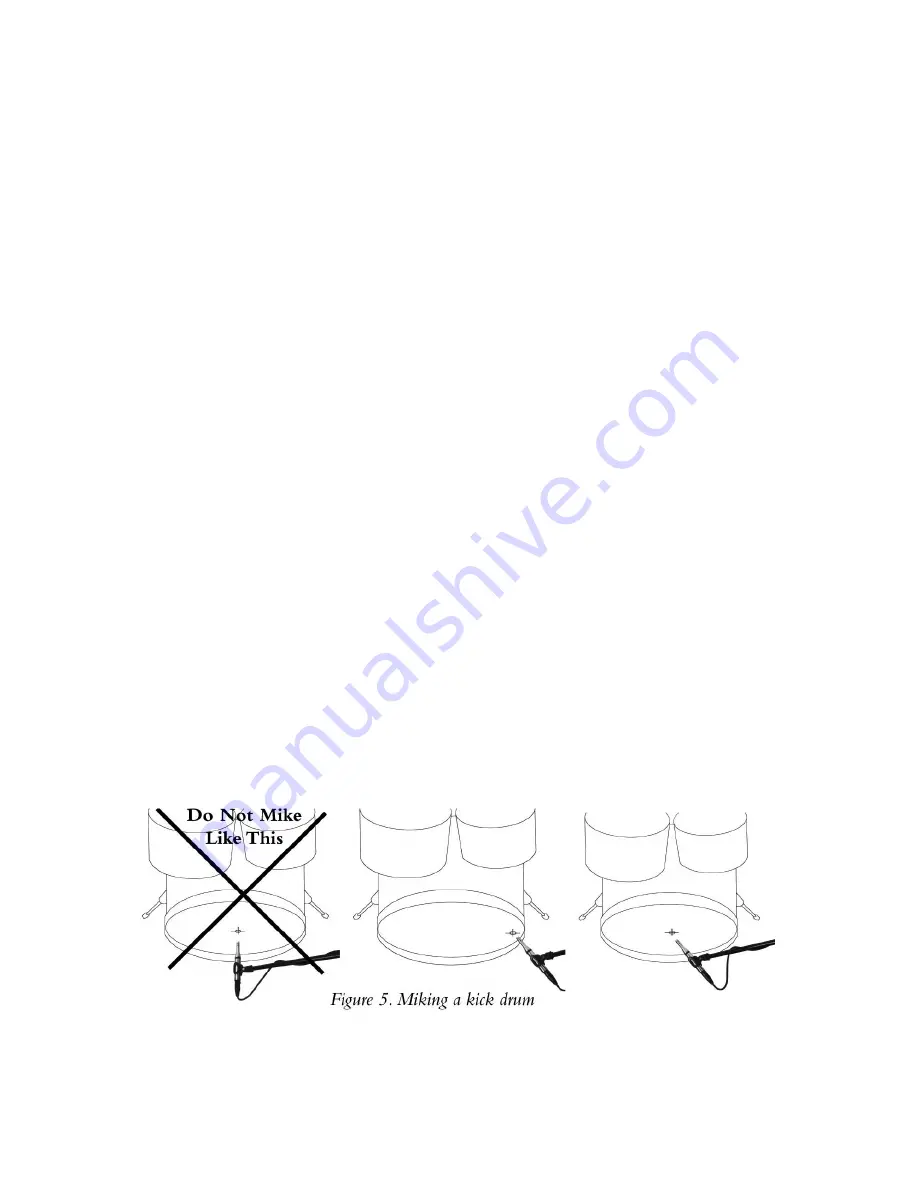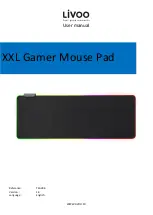
2
Miking the Kick Drum and using the KickPad®
A good kick drum microphone must be designed and optimized for that specific
purpose. This means the microphone is great for kick drum and nothing else. There-
fore we designed our kick drum optimization in an external XLR package - the
KickPad™. Just plug the KickPad™ into the mic line going to the SR25 kick drum
mic for magnificent results. With the KickPad™ removed, you can use the same
SR25 microphone for recording most anything. All three high quality Earthworks
High Definition Microphones™ in the DrumKit™ System can be used for other
instruments and vocals. As an added bonus, the KickPad™ will improve the sound
of other popular microphones used for kick drum. By listening to tracks 4 through
9 on the DrumKit System Demo CD, you can hear the results of the KickPad used
on our SR25 cardioid microphone and also on an AKG D112 cardioid microphone.
The KickPad will provide outstanding results on other popular kick drum micro-
phones such as the E-V RE20, Audix D-6, Shure 57 and others. Simply plug the
KickPad into the mic line feeding the kick drum mic and you will be astonished
with the sound.
Important Please Read
The Earthworks SR25 supplied for miking kick drum is a precision condenser
microphone and is sensitive to large bursts of air. However, this microphone used
properly will produce an incredible kick drum sound. For optimum results it is
crucial to place the SR25 at a 45 degree angle to the head (which reduces the air
burst at the front of the microphone). Whether your kick drum has a front head or
not, place the SR25 at a 45 degree angle to the front of the drum as indicated in
Figure 5. If there is a hole in the front head of the kick drum, do not place the mic
in front of the hole as there will be a large burst of air hitting the microphone. In
our field tests, we achieved the best results and the best sound by miking the drum
just off of the rim as shown in Figure 5. Whatever your approach, if you get any
popping from the air bursts, place the enclosed windscreen on the kick drum mic.
We hope these suggestions have been beneficial for you. Don’t be afraid to experi-
ment with mic placement. You can be as creative with your mic placement as you
are with your music. You are the judge of what works best and sounds best.
Version 3, July 7, 2011















